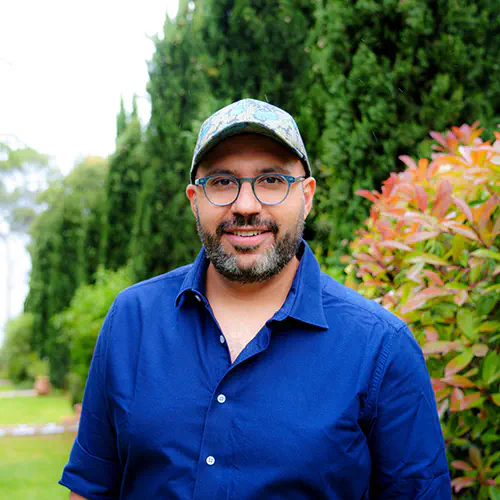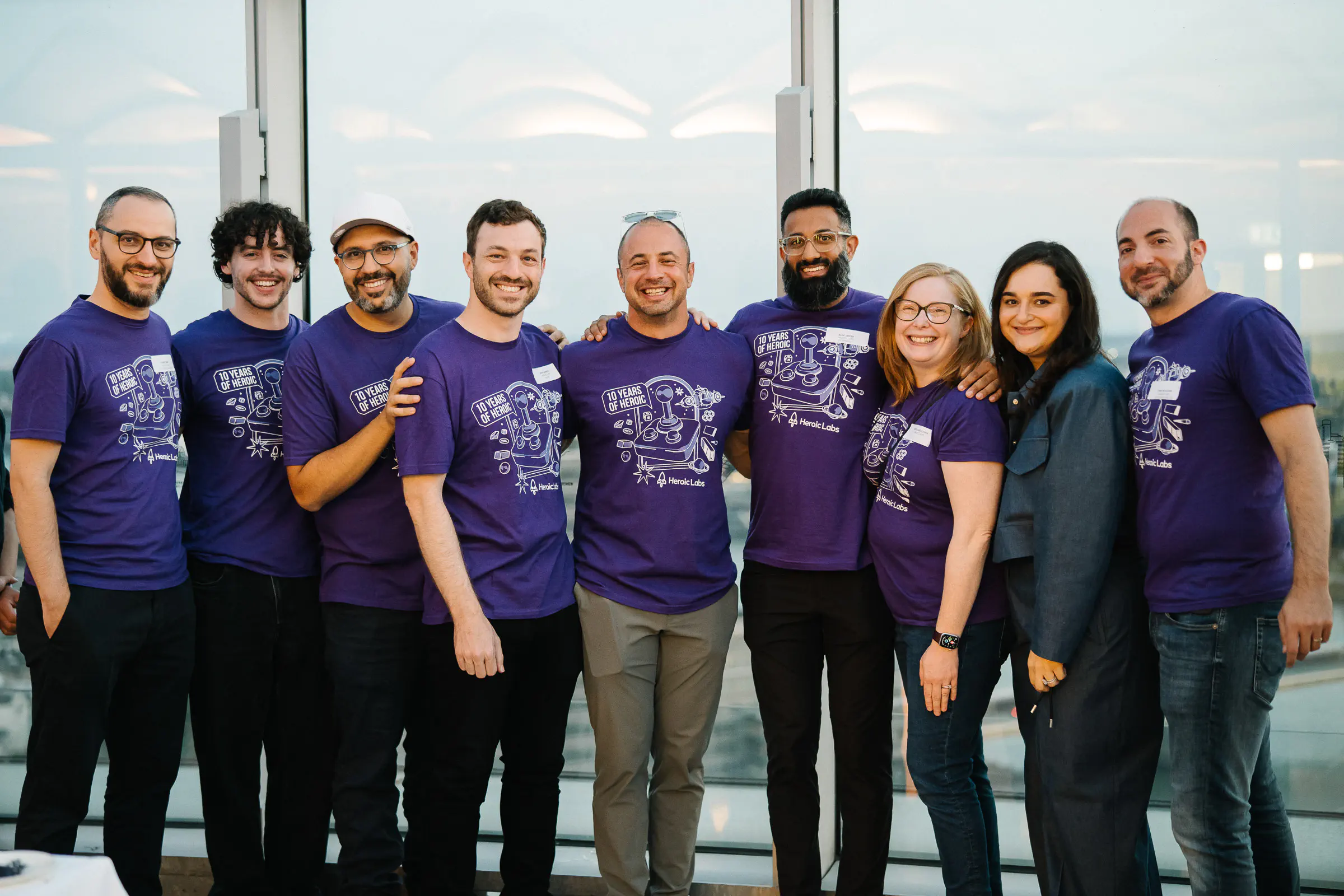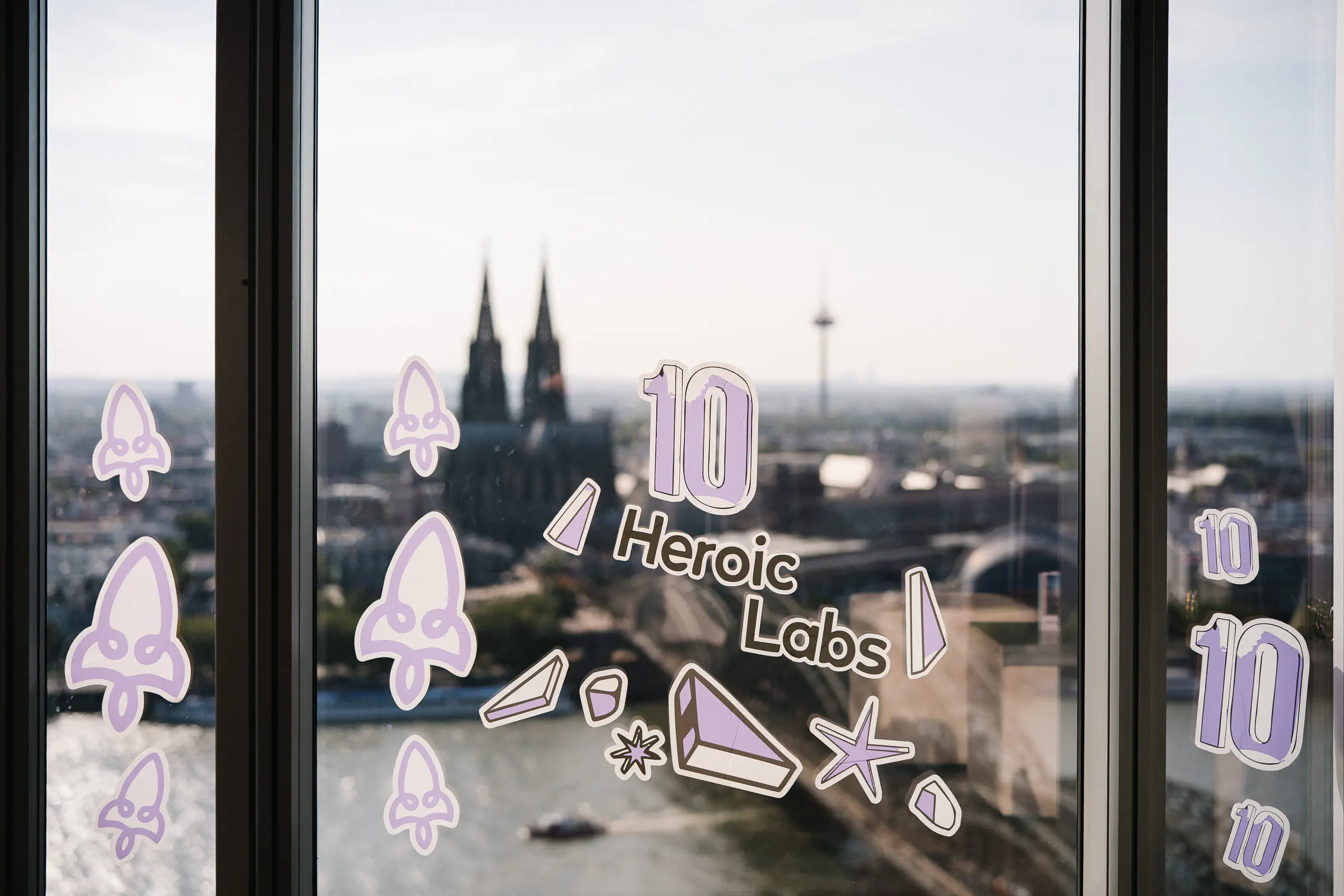My Three Gamescom Takeaways

Gamescom is always a busy week. It is loud, full of energy, and a chance to see so much of the industry in one place. Typically my Gamescom days are roughly 10 hours of back-to-back meetings at the Radisson Blu. This year was no different, and I wouldn’t want it to be. But it was even more special. We celebrated ten years as a company with over 400 friends, clients, and partners who joined us on a rooftop overlooking Cologne.

Looking back at the week, I wanted to capture three themes that came up again and again in my conversations. These are not abstract trends. They are practical realities that every studio we spoke to is facing, and they are shaping how we at Heroic build and operate today.
1. Funding crunch means focus
The capital environment is tighter. Every studio knows it. Budgets are thinner, fundraising cycles take longer, and teams are expected to do more and better with less. The result I see is focus.
Studios are not spending precious months and millions on custom tech and tools for games that may or may not make it past soft launch. They are heading straight to market, and they are looking for infrastructure that works reliably from day one.
That shift is exactly why we built Heroic in the first place.
Our role has always been to remove that friction. If a studio wants to validate market fit quickly and confidently, we can provide the backend, the live ops, and the scalability without them burning resources on building tools they will not be able to maintain long term.
It’s definitely bittersweet to see the industry downturn emphasize the value of proven third party providers.
2. Live operations is everything
The bar for live operations has only gone up. Players expect fresh content, smooth events, balanced economies, and community interaction that feels alive. A small gap in tooling or a delay in response can be the difference between growth and churn.
This reality has guided a lot of our work on Satori. Client demands kept rising: more personalization, faster iteration, better reliability. At some point, incremental updates were not enough. We rebuilt and relaunched the platform as Satori 2.0 to meet those expectations.
That decision came directly from what we heard on the ground. Studios do not want theory. They want operational reliability, proven uptime, and confidence that their live ops stack can scale with their game. Our job is to make sure they can spend time building content and delighting players instead of fighting infrastructure.
3. AI is already here
AI has been the buzzword of the year, but the reality is more measured. It has not been a single breakthrough that changes everything overnight. Instead, it has quietly improved efficiency in ways that are already shaping how both we and our clients work.
For our clients, AI is helping with faster iteration of creative, smarter segmentation of players, and more efficient testing of features. For us internally, AI has allowed us to speed up delivery while keeping our team size compact and agile.
Ten years in, we are serving more clients than ever before, but we have been able to grow our team in a controlled, sustainable way. AI has played a real role in that balance. And I’m looking forward to sharing how we can do more, faster and better as an engineering organization with AI.
Closing thoughts

When I look back on the last decade, and especially on our anniversary night at Gamescom with over 400 friends of Heroic in the room, the lesson is clear. Our industry is built on relationships, on trust, and on shared belief in what games can be.
The funding environment will shift again. Player expectations will keep climbing. Technology will continue to evolve. Through all of it, our job is to deliver reliable, scalable, and developer-friendly infrastructure that lets studios focus on building games.
That has been true since day one, and it will guide us into the next decade. Thank you to everyone who has been part of this journey so far.
Mo Firouz
COO, Heroic Labs

Speak to the Heroic Labs team



